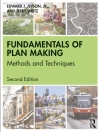This volume discusses the growing issue of global environmental microplastic pollution resulting from the industrial manufacturing of everyday products. The book focuses on the emergence of microplastic pollution, types, sources, fate, dynamic trends in the environment, occurrence in different environmental settings, toxicity, risk assessment, and prevention strategies. The authors provide a detailed explanation and provision of the techniques used for the detection, separation, and identification of microplastics for use by industry workers and scientists, along with policy recommendations for legislative bodies to reduce the spread and impact of harmful microplastics. The book will be of use to students, teachers, researchers, policy makers, and environmental organizations.
表中的内容
Part1. Introduction to Plastic pollution.- Chapter1. Emerging issue of Microplastic in Sediments and Surface water of South Asia: A Review of Status, Research Needs and Data Gaps.- Chapter2. Extraction, Enumeration and Identification Methods for Monitoring Microplastics in the Aquatic Environment.- Chapter3. Monitoring of Microplastic Pollution.- Chapter4. Polymer types of microplastic in coastal areas.- Chapter5. Evaluation of Different Metrics to Study Microplastics as an Environmental Forensic Tool.- Part2. Environmental Occurrence.- Chapter6. Atmospheric microplastic distribution, fate, and behaviour in context to pollution.- Chapter7. Microplastic Pollution in the Context of Occurrence, Distribution, Composition, and Concentration in Surface Waters and Sediments: A Global Overview.- Chapter8. Microplastic Pollution in the Black Sea: An Overview of the Current Situation.- Chapter9. Occurrence and fate of microplastics in freshwater resources.- Chapter10. Occurrence of microplastic pollution in freshwater.- Chapter11. Occurrence of Microplastic Pollution in Coastal Areas.- Chapter12. Modeling the fate and transport of microplastics in coastal areas.- Chapter13. Occurrence of microplastic pollution in marine water.- Part III. Risk assessment and health impact.- Chapter14. Microplastic Pollution and Contamination of Seafood (including fish, sharks, mussels, oysters, shrimps, and seaweeds): A Global Overview.- Chapter15. Impacts of Plasticizers on Riverine Ecological Integrity in Context to Sustainability Challenges.- Chapter16. Consequences of Plastic Trash on Behavior and Ecology of Birds.- Chapter17. Risk assessment of microplastic pollution.- Chapter18. The ecotoxicological effects of microplastics on trophic levels of aquatic ecosystems.- Chapter19. Ecological and public health effects of microplastics pollution.- Part IV. Treatment Technologies.- Chapter20. Microplastics as an emerged contaminant and its potential treatment technologies.- Chapter21. Green treatment technologies for microplastic pollution.- Chapter22. Chemical Technologies to degrade microplastic pollution.- Chapter23. Bibliometric Analysis of Emerging Trends in Research on Microplastic Pollution in Post-Paris Agreement and Post-COVID-19 Pandemic World.
关于作者
Dr. Muhammad Zaffar Hashmi is an Assistant Professor of Environmental Engineering in the Department of Chemistry at COMSATS University Islamabad Campus, Pakistan. Dr. Hashmi works on multiple water, soil, air and health related issues, and has expertise in developing environmentally sustainable and feasible technologies.












